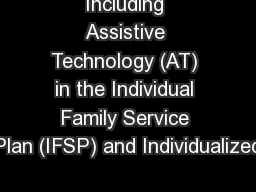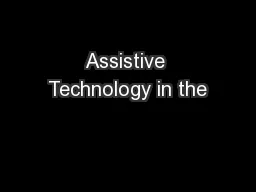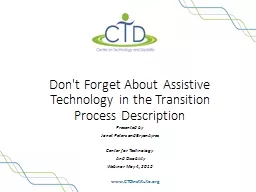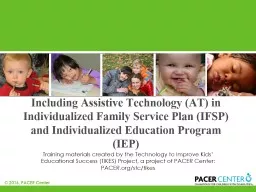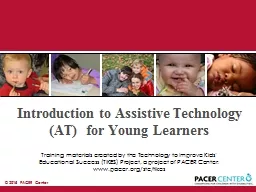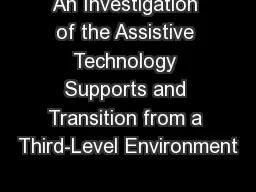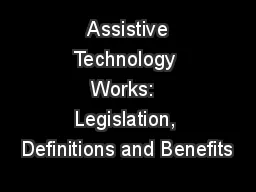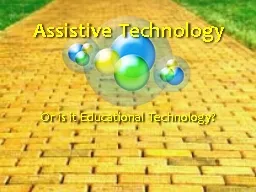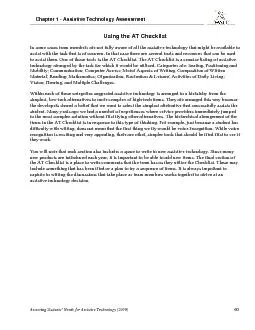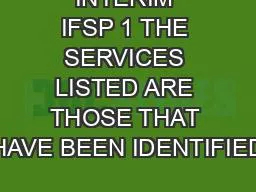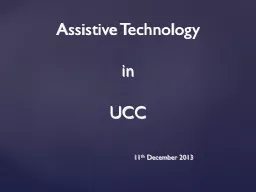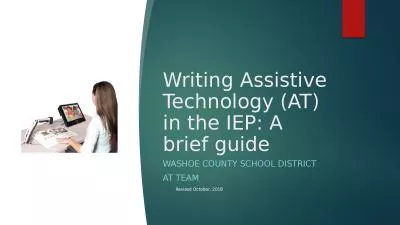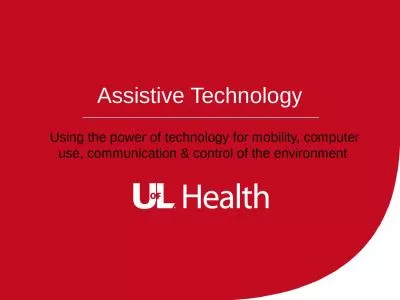PPT-Including Assistive Technology (AT) in the Individual Family Service Plan (IFSP) and Individualized
Author : alexa-scheidler | Published Date : 2018-12-05
Training materials created by the Technology to Improve Kids Educational Success TIKES Project a project of PACER Center PACERorg stc tikes 2016 PACER Center
Presentation Embed Code
Download Presentation
Download Presentation The PPT/PDF document "Including Assistive Technology (AT) in t..." is the property of its rightful owner. Permission is granted to download and print the materials on this website for personal, non-commercial use only, and to display it on your personal computer provided you do not modify the materials and that you retain all copyright notices contained in the materials. By downloading content from our website, you accept the terms of this agreement.
Including Assistive Technology (AT) in the Individual Family Service Plan (IFSP) and Individualized: Transcript
Download Rules Of Document
"Including Assistive Technology (AT) in the Individual Family Service Plan (IFSP) and Individualized"The content belongs to its owner. You may download and print it for personal use, without modification, and keep all copyright notices. By downloading, you agree to these terms.
Related Documents

